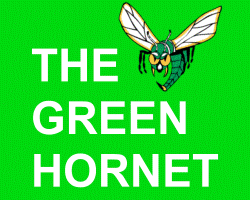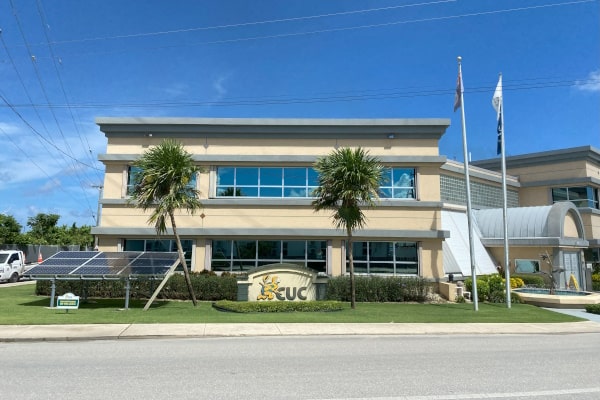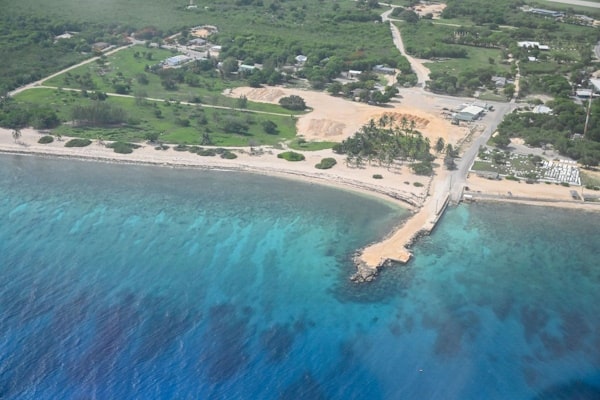When they’re gone, they’re gone forever
Green Hornet writes: A few years back the National Trust published a small booklet all about the animals that had once lived here and which are now extinct. It was funky in its own way, with each animal telling the story in dialect about his or her own extinction. Back to the Oxford English Dictionary (OED): Extinction 1. Making or becoming extinct. 2. Extinguishing or being extinguished. 3. Total destruction or annihilation. Can’t get much clearer than that.
A quick rundown of the list shows that it was human beings which primarily caused the eradication of these animals. Fossils show that the first to go was the Giant Hawk (Titanohierax), thought to have vanished around 14,000 years ago in the Pleistocene Age, before the Cayman Islands were inundated by the sea level rising.
Next on the list is the Hutia, a small rodent-like animal which was wiped out by the advent of humans and the accompanying rat and domestic cat and dog populations, coupled with the clearing of its habitat, the forest. Remains found in caves on the Brac’s Bluff have put the last Hutias (there were three species here) at the end of the 19th century.
The last of the Grand Cayman thrushes (Turdus ravidus) disappeared in 1938. Up until the ’32 Storm the only place left where they were to be found was the East End forest. They were cousin to the Red-Legged Thrush still found on the Brac.
The Caribbean Monk Seal (Monachus tropicalis) was last seen off the Seranna Banks in 1952. Observing Caribbean ‘sea wolves’ on the coast of Santo Domingo in 1494, Columbus promptly ordered his crew to kill eight of the animals for food, paving the way for exploitation of the species by the European immigrants who came in his wake. The slaughter continued up until the 20th century, with hunters sometimes killing as many as a hundred seals in a night.
The tiny West Indian Shrew (Neosphontes sp.) was another species to fall victim to the rats which came with the early settlers. A tiny mammal with a long snout, these animals are widely believed to have survived the Pleistocene ocean inundation extinction since remains have been found prior to that time. However, discrepancy exists on when they became extinct. Some authorities estimate extinction coinciding with the arrivals of rats aboard Spanish vessels in the early 16th century. Others claim that some species survived until the early 20th century.
Finally, there is the Fresh Water Crocodile (Crocodylus rhombifer), described by Sir Francis Drake in his Primrose Journal. The massive reptile became extinct around 300 years ago after clearing of the forest caused the disappearance of much of the fresh and brackish water that comprised its habitat.
In our own time, National Trust scientists and volunteers are constantly fighting an uphill battle to ensure that Cayman’s Blue Iguana doesn’t join the ranks of these animals, which we are primarily responsible for eradicating from the planet. The Sister Islands Rock Iguana potentially faces the same fate, as does the West Indian Whistling Duck.
There are two reasons that caused me to write about this particular issue. The first was a sight a few years back of a huge green turtle weighing at least 450 pounds and probably at least 80 years old lying on its back while it was slaughtered for turtle meat we really don’t need. It surely is time that we banned turtle fishing once and for all. It can only be vested interests that have prevented the legislation from being enacted. Now’s the time to cancel all licences. However, the National Conservation Council (NCC) Sea Turtle Conservation Plan passed in 2016 still allows wild turtle hunting with a licence. It’s probable that the owners of such licences must all be close to being octogenarians by now. And you can’t take the licence with you…
The second was a recent BBC article by journalist Alex Kirby, which stated that 40 percent of all mammals are currently facing some extinction risk. That’s almost double that of 30 years ago.
All the creatures we share the Earth with are important in some way, however unprepossessing or insignificant they may appear. They and we are all part of the web of life. From the dawn of time, says the article, extinction has usually progressed at what scientists call a natural or background rate. Today the tempo is far faster, and many scientists accept that this is the sixth great wave — the sixth mass extinction to affect life on Earth.
We were not here for any of the previous mass extinctions, but this time our sheer preponderance is driving the slide to oblivion.
Species in decline
The Living Planet Index, prepared annually by the World Wide Fund for Nature (Switzerland), the UNEP World Conservation Monitoring Centre (UK), and the Centre for Sustainability Studies (Mexico), tracks the size of specific populations of selected species. It shows them as a percentage of the 1970 populations, and it shows falling population levels in all three ecosystem types studied.
We homo sapiens have more than doubled our numbers in half a century, and that is the most obvious reason why there is less room for any other species. We are taking their living room to grow our food, their food to feed ourselves. We are exploiting them, trading in them, squeezing them to the margins of existence — and beyond.
Sometimes the choices are not easy to make: conserve a species or feed a community, tourists’ dollars or turtles’ nests. Can we have both? That is the conundrum.
In 2020 the World Conservation Union’s Red List, which lists endangered species throughout the planet, said more than 35,765 are threatened with extinction. There are now 128,918 faced some extinction risk, including one bird in seven, 20% of the world’s flowering plants and 40% of all mammals.
And that’s just a ballpark figure. Scientists have described some 1.75 million specie; some experts estimate that there may be 13 or 14 million in the world in total, but until they are completely catalogued nobody knows. New species are turning up all the time.
For those who are curious about our place in the annals of time, the previous five mass extinctions took place during the following periods: Cretaceous (About 65 million years ago), Triassic (About 208 million years ago), Permian (About 245 million years ago), Devonian (About 360 million years ago), Ordovician (About 438 million years ago).
As BBC writer Alex Kirby states: “Our pillage of the natural world has been likened to burning down the medieval libraries of Europe, before we had even bothered to catalogue their contents. Many species keep us alive, purifying water, fixing nitrogen, recycling nutrients and waste, and pollinating crops. Plants and bacteria carry out photosynthesis, which produces the oxygen we breathe. Trees absorb carbon dioxide, the main greenhouse gas given off by human activities.”
In 2019, when the global annual gross product was about $87.5 trillion, US researchers calculated the value of the goods and services provided by the Earth to the world economy: $125 trillion. Tropical cone snails contain toxins which show promise for treating some forms of cancer and heart irregularities. One toxin may be a thousand times more potent than morphine for pain relief. But millions of cone snails are now killed annually for their shells, and their habitats are under severe pressure.
The web is unravelling
That is the argument for utility. But the creatures we can see, and those we can use directly, are just the start of the story. Lord May, president of the Royal Society (the UK’s national academy of sciences), has said, “Most conservation effort goes into birds and mammals — creatures like the panda, a dim, dead-end animal that was probably on the way out anyway. Yet arguably it’s the little things that run the world, things like soil microbes. They’re the least-known species of all.”
And we continue to tug at the loose threads of the web of life, thinking we can split it into its separate parts. But it continues to unravel.
76% of UK butterfly species are reported to be declining.
Brazil nuts are a lucrative harvest in the Amazon. But an experiment to produce them in plantations failed, because the trees bear a good crop in the forest, but are barren in isolation. We are not removing individual species from the Amazon: we are destroying the entire forest. US researchers estimate that by 2030 less than 5% of it will remain in pristine condition. Within 10 years, about a fifth of central Africa’s forests will have gone, by one estimate. And the forests of Indonesia are in headlong retreat.
However, all is not lost. Some species are bucking the trend towards extinction. In 1953 there were about 2.5 billion people: today there are 7.8 billion. The projection for 2050 is 9.9 billion – although many believe that we may never reach that figure with the impact of an increasing number of plagues like COVID-19. The net result of our destruction of the biodiversity that surrounds us on the planet.
Ensuring other species keep their living space is not sentimental. It is the only way we shall survive. Extinction, whatever Steven Spielberg says, really is for ever. The web is unravelling.
- Fascinated
- Happy
- Sad
- Angry
- Bored
- Afraid
Category: Science & Nature, Viewpoint





































But there is land to develop so I can retire. Why should my life be wrecked because of a shrew?
Sad to read and even more sad to think that a lot of people here don’t care at all for these animals.
Just yesterday I noted a new development along the ETH, set to decimate one of the last land crab habitats in that area.
Soon endemic species in Cayman will consist of concrete!!
Close to home, both Elkhorn and Staghorn coral – which are precious in their own right and as habitat for many other species – are critically endangered. This hasn’t stopped the government from paving the way, with its new Marine Park ‘Protection’ Regulations, for the destruction of acres of these corals when it brings back its discredited, unwanted cruise berthing facility.
If there’s another explanation for removing protection from George Town Harbour, I’d love to know what it is. Perhaps Stran Bodden could tell us – he was the one after all who swore an affidavit in the judicial review stating that this was indeed the reason.
If you care about Cayman’s marine environment, then you need to stand up to this government’s disgraceful plans, and even better, vote the whole dishonest bunch of them out of office next month.
Not to mention parrots, agoutis, most butterflys, native plants, etc.
Skilpots as well.